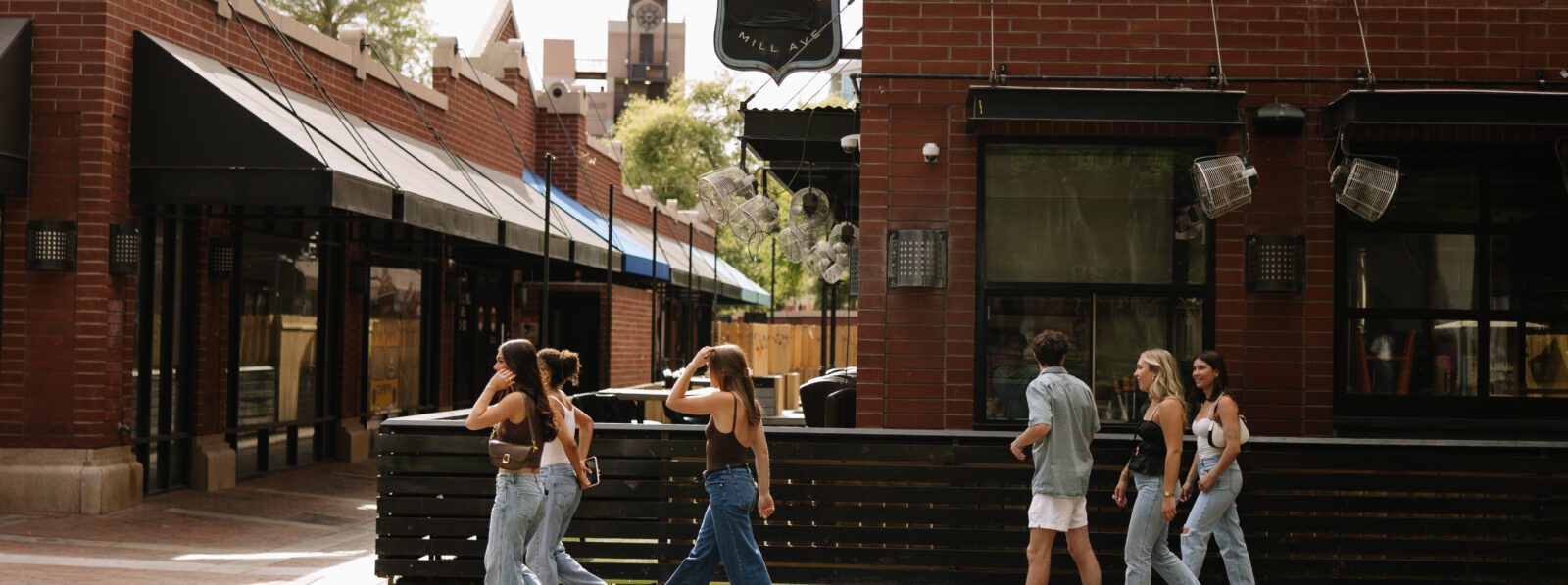The cost of living close to campus is one of the first factors to take into account when developing a college budget. As a student at ASU approaching my senior year, I am well acquainted with how difficult it can be to find accommodations that fit your standards.
Here at Rambler Tempe, we know that budgeting for your next school year is a big deal. In this guide, we’ll break down how rental rates are calculated, factors affecting monthly costs and additional expenses to prepare for.
@ramblertempe Thinking about living off campus at ASU? Let’s talk about what it really costs!🔱✨ #ramblertempe #ASU #Arizonastate #Rambler #ASU29 #TempeAZ #sundevils #tempeapartments ♬ original sound – Rambler Tempe
How Much Does it Cost to Live Around ASU?
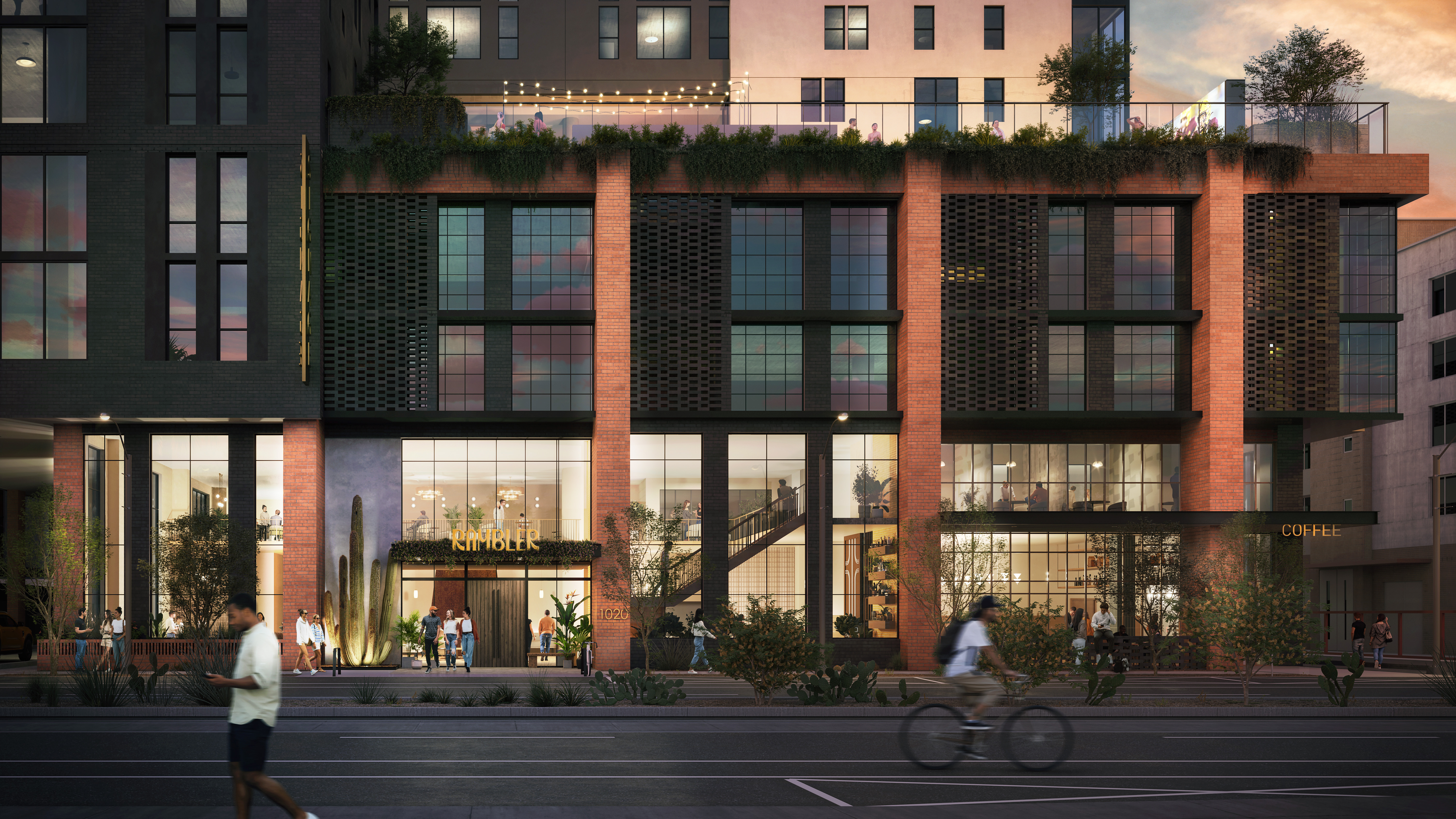
Though this seems to be a straightforward question, the truth is that it varies greatly and changes often. Rent prices depend on what type of housing you choose, the location, and the amenities offered.
Living near ASU costs typically range between $999 and $2,500 per person per month. Your costs depend on factors like the type of housing, the size of your space, the building’s age, amenities, and even which floor you live on. Below, we’ll explore what affects these prices and how they’re calculated.
To help you have a better understanding of the cost of living near ASU, we put together this guide to break it all down for you, including:
- How student housing apartments calculate rental rates
- Which factors affect the price of monthly rental rates
- Other fees to consider on top of monthly rental rate
How Rental Rates are Calculated at Student Apartments
Understanding how apartments set their rental rates is key to determining your monthly budget.
For traditional houses or apartments, tenants typically sign a joint lease that covers the entire unit. All roommates share a single contract with the landlord, meaning they are collectively responsible for paying rent and covering any property damages throughout the lease term.
In student apartments, each roommate signs an individual lease, commonly called a by-the-bed lease, where each tenant is responsible only for their rent and damages. This means you are only responsible for your share of the rent as outlined in your lease agreement. Likewise, your liability is limited to damages within your private room, bathroom and any shared spaces.
Knowing the difference between a traditional lease and an individual lease is important in understanding what your rental rate covers.
The length of your lease is another key factor to consider. In student apartments, leases typically span 12 months, starting in mid-August and ending on July 31 of the following year. While this is standard for most student housing, some apartments may offer early move-in options or shorter six-month leases for students graduating mid-year or studying abroad, depending on room availability.
On-campus housing typically offers nine-month contracts, covering Fall and Spring semesters. This eliminates the hassle of finding a summer subletter but may leave students without access to housing during academic breaks. However, a drawback is that most on-campus housing closes during academic breaks, such as winter and spring breaks, leaving students without access to their accommodations during these times.
What Factors Can Affect Monthly Rental Rates?
Your housing costs depend on several factors:
1. Housing Type
Popular housing types include:
- Residence Halls: Compact dorm-style rooms with shared amenities.
- The Greek Leadership Village (GLV): Fraternity and sorority housing with communal living.
- Student Apartments: Individual leases with modern amenities.
- Traditional Apartments: Typically joint leases near campus, but not associated with the school.
- Traditional Houses: Standalone homes near the campus with individual or joint leases and shared living spaces.
READ NEXT: What Types of Housing are Available for Students Near ASU?
Residence Halls
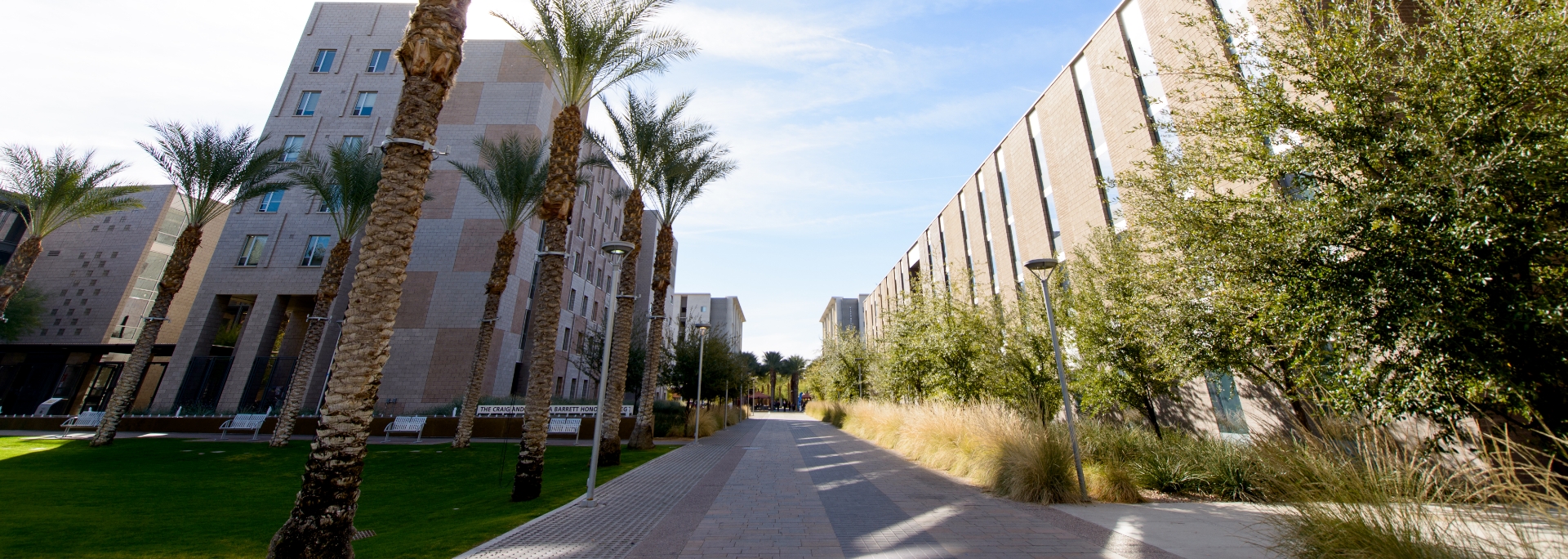
Hassayampa Academic Village at ASU. Photo courtesy of Arizona State University Tempe Campus.
First-year students often live in dorm-style residence halls with compact shared rooms and community bathrooms. Apartment-style residence halls, available to upperclassmen, offer private bedrooms with shared common areas.
On campus housing ranges from $3,763 to $10,887 per semester, and the meal plans range from $1,835 to $3,355 per semester. These contracts are nine months long.
This means that the total cost of living in the dorms, plus the cost for the meal plan totals around $5,598 to $14,242 per semester, depending on the type of dorm, dorm location and selected meal plan.
For apartment-style residence halls, you have the option to opt into the meal plan, but it is not required. Pricing for one of these apartments ranges from $8,948 to $21,774 annually, not including the meal plan.
It’s important to note that both dorm-style and apartment-style residence halls, along with meal plans, operate on nine-month contracts spanning from mid-August to early May.
For further information about residence halls, refer to the ASU Student Housing Information Page.
The Greek Leadership Village (GLV)

The Greek Leadership Village at Arizona State University Tempe Campus.
The next on-campus housing option is the Greek Leadership Village. At ASU, this is widely known as the GLV. With more than 30 Greek houses on campus, this option is great for any students closely affiliated with their fraternity or sorority.
The GLV being on-campus provides an immersive community experience. These typically involve shared rooms, communal bathrooms and bundled fees covering rent, utilities and meal plans. Costs vary by organization but are often more affordable than other options.
Typically, these houses feature smaller rooms accommodating two members, sharing community bath spaces. The living conditions and available amenities hinge largely on the specific Greek organization you are associated with.
Similar to residence halls, many sorority and fraternity houses follow a seasonal schedule, often closing or partially closing during the summer. Consequently, housing contracts typically span the nine months of the Fall and Spring semesters.
Pricing for Greek housing is billed through ASU. These houses charge live-in members a rate covering rent and utilities for the lease term. Due to this comprehensive fee structure, living in the GLV often proves more cost-effective than various on- and off-campus alternatives.
Student Apartments
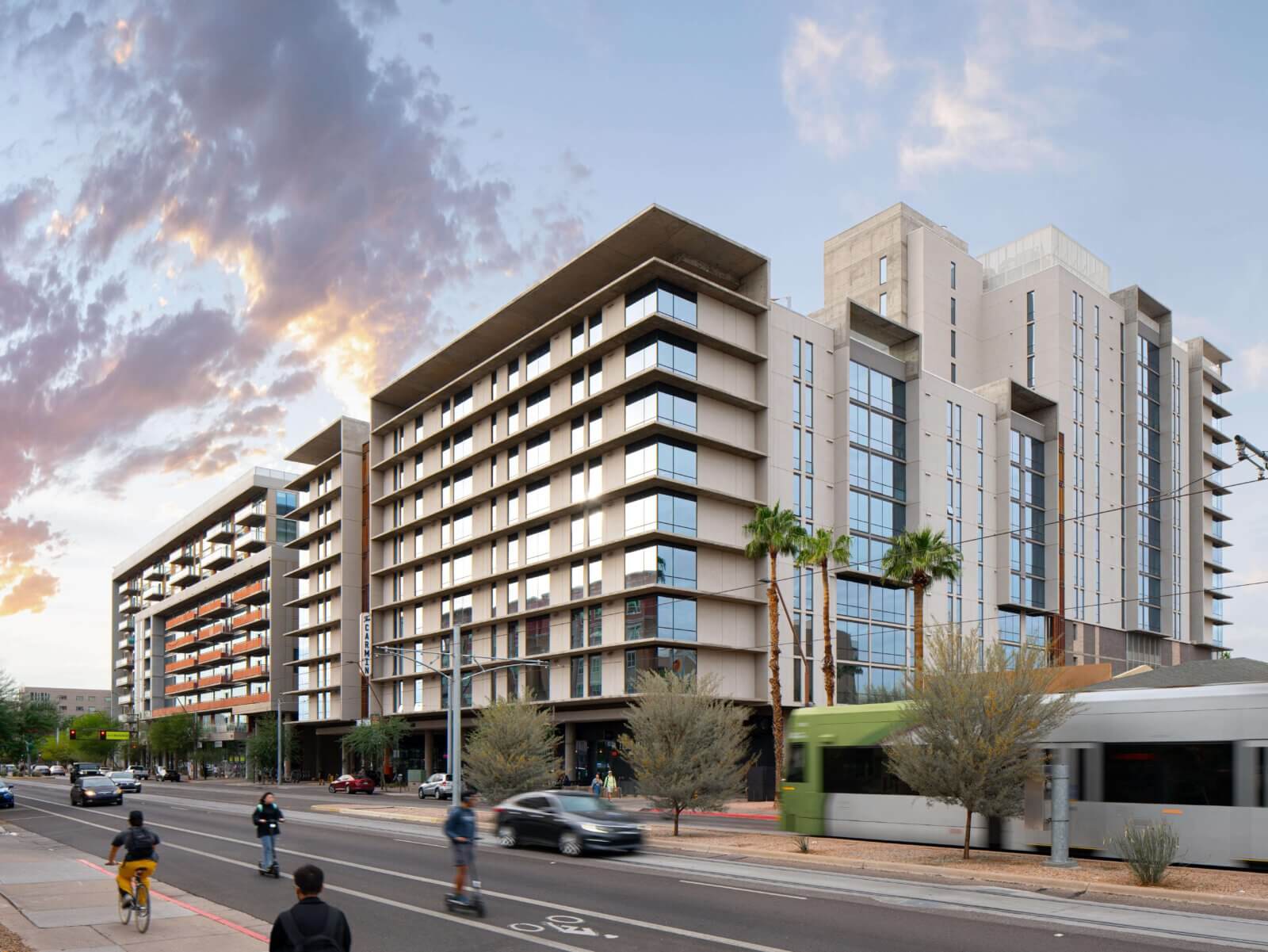
Student apartment in Tempe, Arizona. Photo courtesy of The Carmin.
READ NEXT: ASU Tempe Student Apartment Review: The Carmin
Student apartments are one of the most popular off-campus housing options near ASU. These modern apartments are designed with students in mind, often providing a price point similar to on-campus residence halls.
Student apartments offer individual leases, also known as by-the-bed leases, making them an excellent option for students who want flexibility when subleasing. Additionally, these apartments often boast trendy, state-of-the-art amenities such as saunas, yoga studios, golf simulators, pool decks, fitness centers and more.
Due to the relatively new construction of these student apartments near campus, rental prices typically range from $1,200 to over $2,500 per person, per month, depending on factors like location, amenities, apartment size and additional features.
READ NEXT: Student Apartments or Traditional Apartments Near ASU: Choosing the Best Off-Campus Housing for You
Traditional Apartments
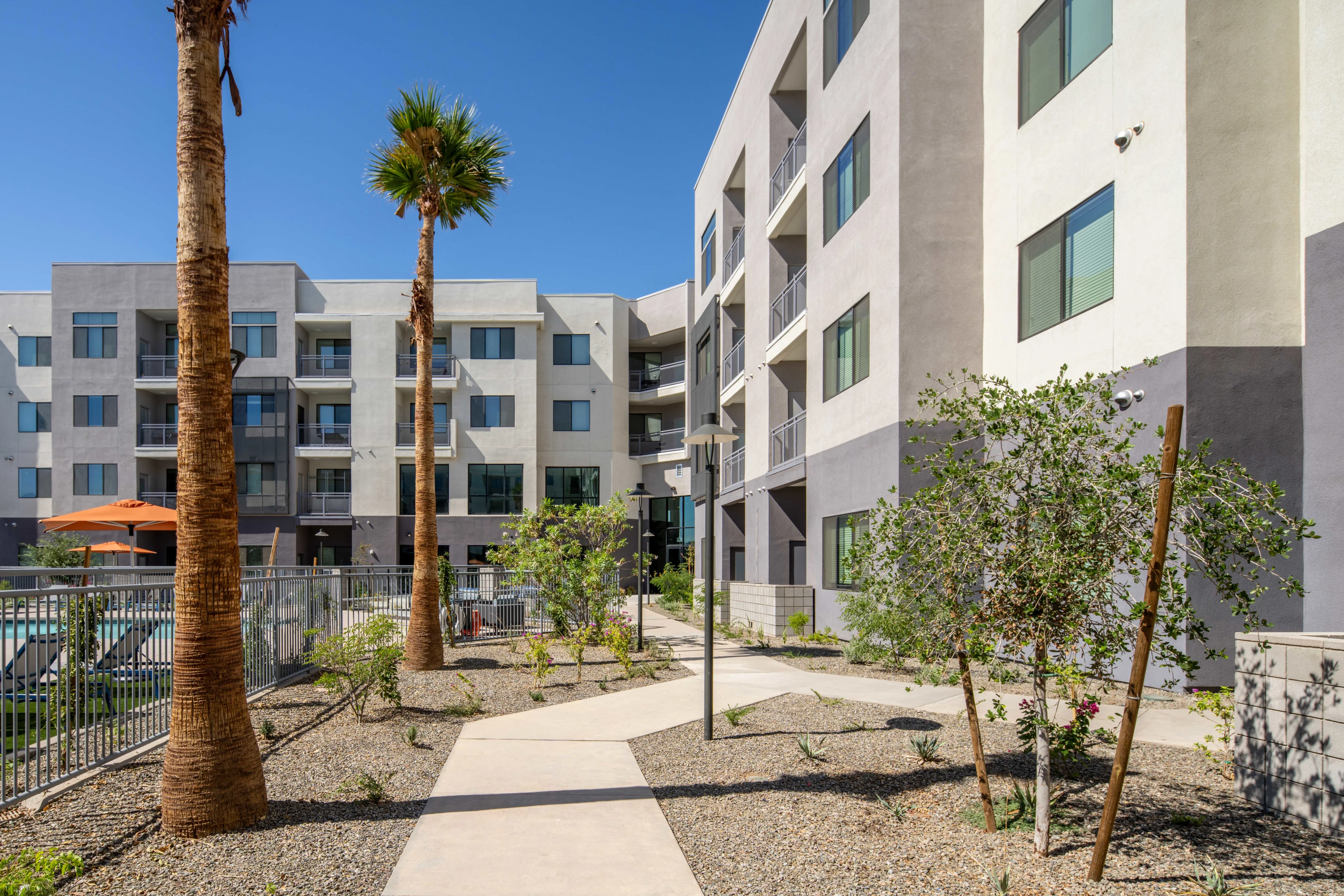
Traditional apartment in Tempe, Arizona. Photo courtesy of Novo Broadway Apartments
Another option for off-campus housing is traditional apartments. Unlike student apartments, these typically use “by-the-apartment” leases, where all roommates share responsibility for the entire unit. Traditional apartments often come unfurnished and may offer fewer amenities or features that are less tailored to college-aged students.
With a wide variety of traditional apartments near ASU, ranging in age, location and target demographic, rental prices can vary significantly. Monthly costs generally range from $999 to over $2,500 per person, depending on these factors.
Traditional Houses

Traditional house in Tempe, Arizona. Photo courtesy of ApartmentHomeLiving.com
Another popular off-campus housing option for students is traditional houses, often found in neighborhoods surrounding ASU. These houses are typically rented through year-long, traditional leases.
While they may lack furniture, modern amenities and are often located farther from campus, traditional houses tend to be more budget-friendly. Rental prices usually range from $900 to $1,800 per person, per month, making them an appealing choice for students looking to save on housing costs.
2. Floorplans
After choosing your preferred type of housing, the next factor to consider is the floorplan.
Units with more bedrooms usually offer a lower cost per person each month. For example, a two-bedroom apartment often has a higher per-person rental rate compared to a four-bedroom apartment.
Additionally, apartments with shared bathrooms or less popular layouts tend to be more budget-friendly options.
3. Building Age
The age of the building can significantly impact monthly rental rates, especially for traditional apartments. Older apartments generally have lower rental costs compared to newer ones. Traditional houses and Greek housing also tend to fall within similar price ranges.
Most student apartments near ASU are relatively new, and their pricing typically reflects the modern amenities and features they offer. On-campus residence halls, operated by ASU, are priced according to tuition rates rather than the age of the building. While older buildings may be more affordable, newer developments often come with trendier designs and luxurious amenities that justify their higher price points.
4. Unit/Room Features
The specific features of a unit play a significant role in determining its rental rate. Beyond the number of bedrooms and bathrooms, consider the following factors that can impact the cost:
- Is your unit furnished?
- Does the unit have a balcony?
- Do you have your own bathroom?
- Is your bathroom attached to your bedroom?
- What floor are you on? One with better views?
If the answer to any of these questions is “Yes,” you can expect a higher rental rate for those added conveniences and features.
Additional Fees Added to Your Monthly Rental Rate
When budgeting, consider these common additional costs:
- Parking Fees: $50–$200 per month
- Utilities: Often $50–$100 per month
- Security deposits: Costs vary by property. Check with your housing provider in advance.
- Rental Insurances: Required by most student housing complexes, typically costing $10-$20 per month
- Pet Fees: If applicable, expect a pet deposit ($200–$500) and/or monthly pet rent ($25–$50 per pet).
Being aware of these costs beforehand is essential for budget preparation.
READ NEXT: 10 Additional Living Costs For Students Renting Apartments Near ASU
We hope this guide helps you plan for the cost of living near ASU, whether in dorms, Greek housing or apartments. Ready to find your next home? Check out our floor plans on the Rambler website or Contact Rambler Tempe’s leasing team today by visiting Rambler House for more information. We’re more than happy to help!
